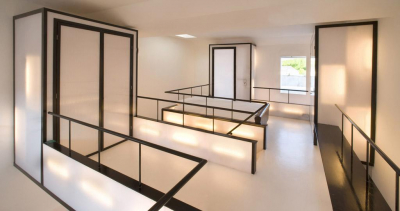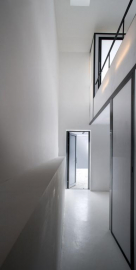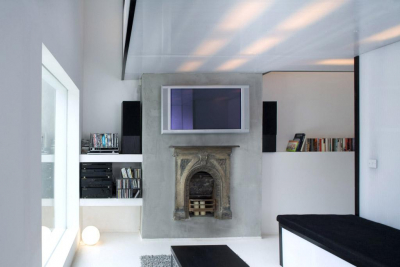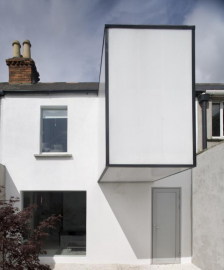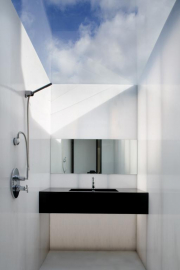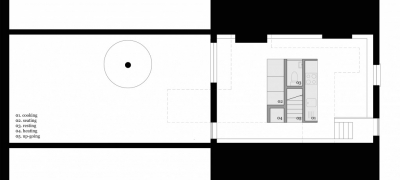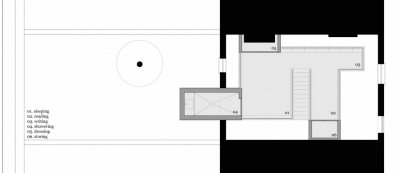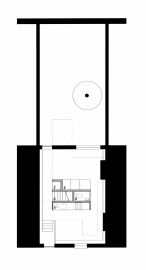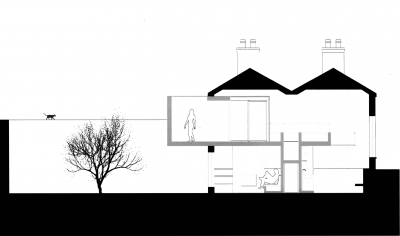The Plastic House
A house is excavated and a space created. The insertion of an object allows inhabitation.
The house is on a terrace whose split-section is native to Georgian Dublin; a grand parlour to the front with smaller rooms to the rear at half-levels one up and one down from the street.
The project begins with removal - of the existing extension, internal walls and earth bringing the entire house to lower ground-floor level. This opens the volume of the house as a double-height vessel, full of light.
A cruciform object is inserted; a piece of architectural furniture which spreads tree-like from a concentrated base. Services such as kitchen, toilet, storage and stairwell are housed within this trunk - providing for living and dining in the spaces around it.
Above this is a platform for sleeping, dressing and study spaces. The four branches of the structure hold various functions two which span to the side walls act as wardrobes while that to the front is a cantilevered reading desk for the teacher-client. The fourth branch extends through the rear wall and projects out two meters beyond ; housing a shower room, which is glazed to the sky, reminiscence of the traditional Georgian return typology.
A ledge running along the perimeter wall downstairs expresses the retaining wall which was built against the street and neighbouring houses - this doubles as a shelf for the display of books and artifacts in the living and dining areas. First presented at the arrival platform, the house must be circumambulated before it can be fully understood. At each vantage point the space can be conceived as contained by the existing shell with its double-pitched roof and unaltered openings. The entire house is a continuous yet differentiated volume only the washrooms are fully enclosed. A complex series of interconnected and overlapping spaces is set up by the architectural insertion and its projections.
The insertion is constructed with polycarbonate and steel. This lightweight structure is also the primary source of light in the evening inset fittings cause its translucent surfaces to illuminate the spaces, which it generates above, below and between the object and its container.
- Refraining from building out an extension as requested by the client but working within the existing shell of the house, this avoided pouring new foundations, building new cavity walls, floors and roof etc.
- Providing an additional layer of high level of thermal insulation and making an airtight external envelop by reducing air infiltration and replacing all existing windows.
- reducing energy consumption at all stages (including transport- All the material is sourced locally and largely available)
- Recycled brick from the actual site has been used for the boundary wall butt and environmental work.
- Careful selection of the materials for their durability, low maintenance property and ease of replacement.
- Re-use of existing features such as the fireplace.
- Design of in-built furniture minimizing the need for buying/importing furniture.


